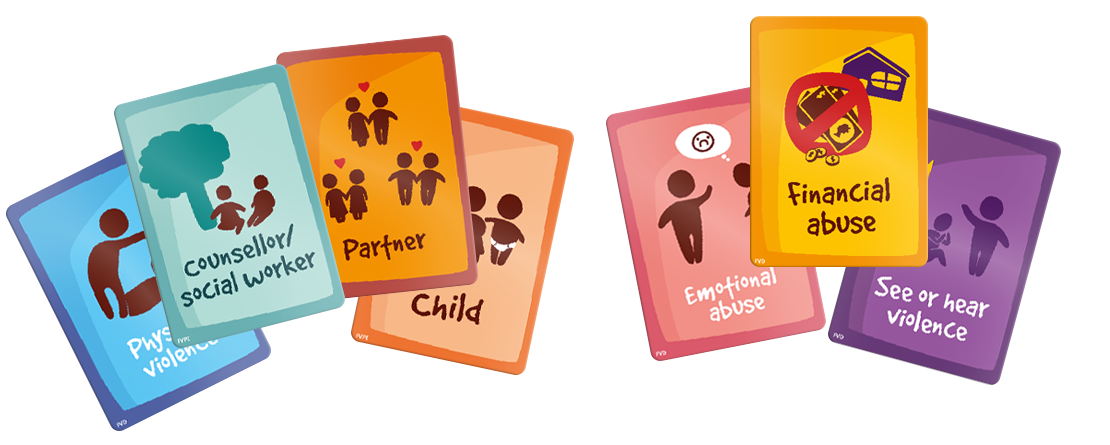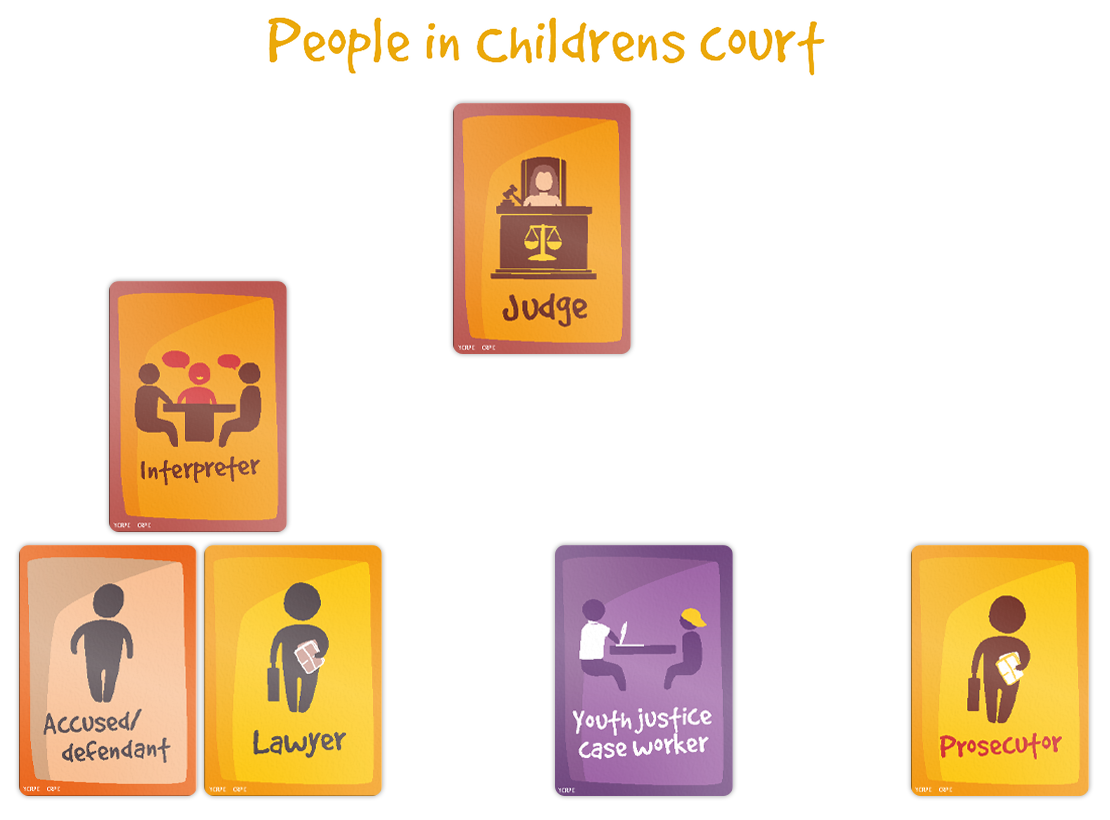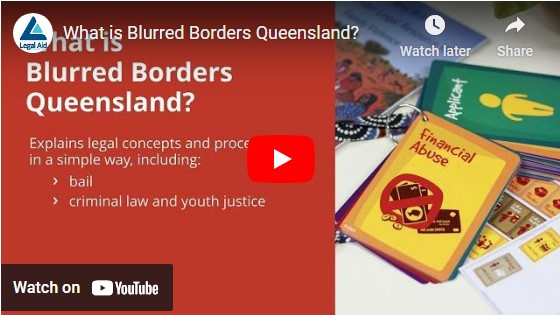About Blurred Borders Queensland
Blurred Borders Queensland is a set of resources designed to help Aboriginal and Torres Strait Islander people understand the law and their legal rights.
The resources have been designed for use by a wide range of service providers across the legal, education, health, public administration and community sectors.
By using visual storytelling and plain language, the resources break down legal concepts and help people communicate more effectively about the law. They help clients make informed legal choices, and actively take part in legal processes.
The kits were primarily designed for use with Aboriginal and Torres Strait islander people, but they can also be used with:
- young people
- people from culturally and linguistically diverse communities
- people with low literacy
- people with disability.
The resources were adapted from the original Blurred Borders project, created by Legal Aid WA and NT Legal Aid Commission.
Who can use the kit?
The Blurred Borders Queensland resource kits have been designed for:
- lawyers
- paralegals
- community workers
- frontline community service providers helping people engaged in the justice system in Queensland.
This includes support agencies, and other people communicating regularly about bail and court processes and family violence—particularly those working with Aboriginal and Torres Strait Islander peoples, people from culturally and linguistically diverse communities, young people, people with low literacy, and people with disability.
Example
Meet G!
G is a criminal lawyer at the Aboriginal and Torres Strait Islander Legal Service who travels regularly to regional centres for circuit court.
G and local support people meet with clients outside the bush court and help them tell their story using the Blurred borders cards. The client and family can all work together this way to understand the process and get the best outcome.
The Conditions cards (below) have been very helpful for people to discuss cultural factors and work out how to follow or ask to change the rules of bail or a sentence.

Meet X!
X is a caseworker at the health service who helps people experiencing family violence.
X can use the people cards and definitions of types of violence (below) to help clients tell their story in a calm and clear way. Then, together, they can work out the best kinds of support.

Meet Y!
The Youth team (Y) includes a speech therapist, case worker and cultural advisor who help young people. They worked together to add the Blurred Borders images in handouts and booklets.
The Y team sit with young people and their supporters before they attend court and use the handouts to explain who is in court, who speaks and when and what will happen there.
The handouts are also helpful during court video-link sessions at the youth detention centre to show who is speaking. Young people have told youth justice workers that they like the visual guides because sometimes it is confusing if the court cameras don’t show who is talking.

 Blurred Borders video
Blurred Borders video
Visit our YouTube channel to learn more about Blurred Borders Queensland.
Related pages
Last updated 23 April 2024